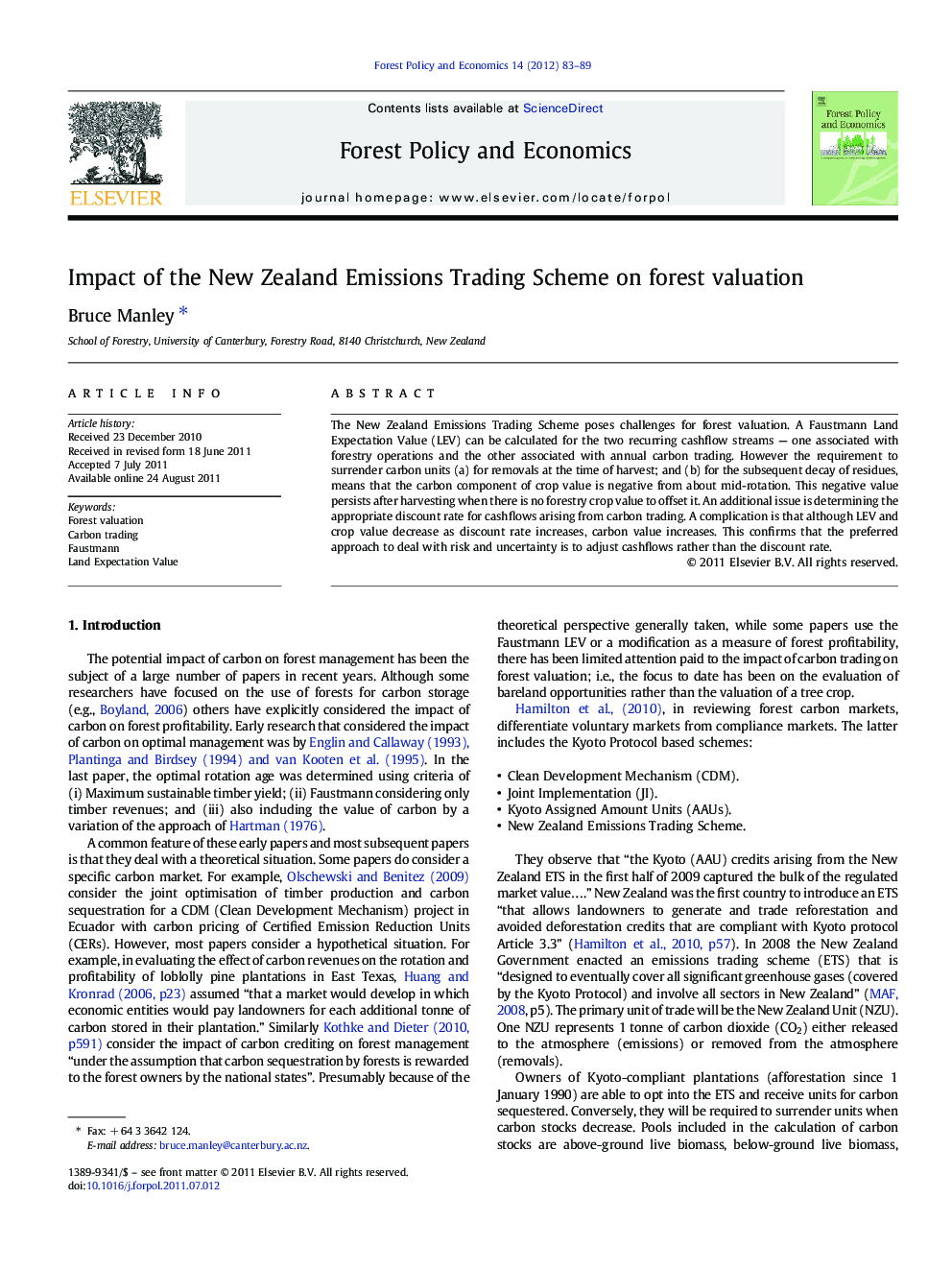| Article ID | Journal | Published Year | Pages | File Type |
|---|---|---|---|---|
| 91469 | Forest Policy and Economics | 2012 | 7 Pages |
The New Zealand Emissions Trading Scheme poses challenges for forest valuation. A Faustmann Land Expectation Value (LEV) can be calculated for the two recurring cashflow streams — one associated with forestry operations and the other associated with annual carbon trading. However the requirement to surrender carbon units (a) for removals at the time of harvest; and (b) for the subsequent decay of residues, means that the carbon component of crop value is negative from about mid-rotation. This negative value persists after harvesting when there is no forestry crop value to offset it. An additional issue is determining the appropriate discount rate for cashflows arising from carbon trading. A complication is that although LEV and crop value decrease as discount rate increases, carbon value increases. This confirms that the preferred approach to deal with risk and uncertainty is to adjust cashflows rather than the discount rate.
► New Zealand has enacted a comprehensive Emissions Trading Scheme that includes forestry. ► The potential impact is a marked increase in profitability as measured by the Faustmann LEV. ► Crop value now has two components – one related to forestry and the other related to carbon trading. ► The carbon component of crop value is negative from about mid-rotation and persists after harvesting. ► Choice of discount rate remains an issue.
